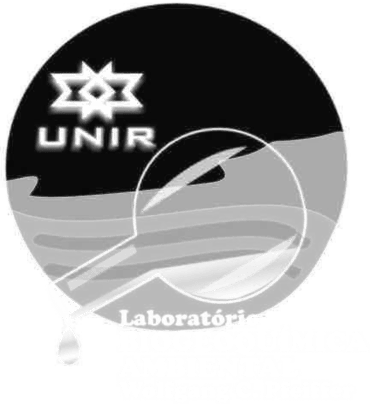Publicações 2023
Mercury in water, Sediment, Trophic dynamics, Trace elements, Stable isotope, Araguaia River, Trophic position, Sediment Mercury, Savanna biome, Saúde Humana, Exposição ao metilmercúrio, Mercury in muscle, Machado River
ARTIGOS & PERIÓDICOS
Trophic dynamics of methylmercury and trace elements in a remote Amazonian Lake
Claudio Eduardo Azevedo-Silva, Ana Carolina Pizzochero, Petrus M.A. Galvão, Jean P.H.B. Ometto, Plínio B. de Camargo, Antonio Azeredo, Sergio A. Coelho-Souza, Krishna Das, Wanderley R. Bastos, Olaf Malm and Paulo R. Dorneles
Abstract: Information on pollutant trophodynamics can be crucial for public health, as contaminated food consumption may lead to deleterious effects. This study was performed in Puruzinho Lake, a remote body of water in the Brazilian Amazon from which a riparian human population obtains an important part of its animal protein intake. Samples from 92 individuals, comprising 13 species and four trophic guilds (iliophagous, planktivorous, omnivorous, and piscivorous fish) were analysed for the determination of trace elements (Fe, Cr, Mn, Ni, Zn, Ca, Sr, Cd, Sn, Tl and Pb) and methylmercury concentrations. Samples from the same individuals had already been analysed for stable isotope (SI) measurements (δ¹³C and δ¹⁵N) in a previous investigation and the SI data have been statistically treated with those generated in this study for the evaluation of trophic dynamics of contami- nants. Methylmercury was the only analyte that biomagnified, presenting TMF values of 4.65 and 4.55 for total and resident ichthyofauna, respectively. Trace elements presented either trophic dilution or independence from the trophic position, constituting a behaviour that was coherent with that found in the scientific literature. The similarity between Ni behaviour through the trophic web to that of essential elements contributes to the dis- cussion on the essentiality of this metal to fish. Considering the Non-cancer Risk Assessment, the calculated Target Hazard Quotient (THQ) values were higher than 1.0 for all analysed individuals for methylmercury, as well as for only one individual for nickel. No other analyte rendered THQ values higher than 1.0.
Mercury Contamination as an Indicator of Fish Species’ Trophic Position in the Middle Araguaia River, Brazil
Lilian de Castro Moraes, José Vicente Elias Bernardi, João Pedro Rudrigues de Souza, Joelma Ferreira Portela, Hasley Rodrigo Pereira, Hugo de Oliveira Barbosa, Nayara Luiz Pires, Lucas Cabrera Monteiro, Ygor Oliveira Sarmento Rodrigues, Ludgero Cardoso Galli Vieira, Carlos José Sousa Passos, Jurandir Rodrigues de Souza, Wanderley Rodrigues Bastos and José Garrofe Dórea
Abstract:This study evaluates the use of mercury (Hg) concentrations in fish muscle tissue to determine a species’ trophic position (TP) in its environment. A campaign conducted in 2019 along 375 km in the middle Araguaia River basin, Brazil, resulted in 239 organisms from 20 species collected. The highest total mercury (THg) concentrations were found in Pellonacastelnaeana (6.93µ·g⁻¹, wet weight) and in Triportheus elongatus (3.18 µ·g⁻¹, wet weight), whose TPs were different according to the FishBase database. However, they occupied the same trophic level in this study. The intraspecific comparison showed a difference in Hg concentrations between individuals captured in distinct sites. The study of the biota–sediment accumulation factor (BSAF) showed that spatiality interferes with a species’ TP. Statistical analyses revealed that when we used a predicted species’ TP based on each individual’s size, it explained 72% of the variability in THg concentration across all fish species. Multiple regression analysis confirmed that standard length and FishBase values are positively associated with THg (R2 = 0.943). These results point to Hg as a viable indicator of a fish species’ TP since it reflects regional, biological, and environmental factors, as demonstrated here for the middle Araguaia River.
Sediment Mercury, Geomorphology and Land Use in the Middle Araguaia River Floodplain (Savanna Biome, Brazil)
Lilian Moraes, José Vicente Elias Bernardi, João Pedro Rodrigues de Souza, Joelma Ferreira Portela, Ludgero Cardoso Galli Vieira, Carlos José Sousa Passos, Jurandir Rodrigues de Souza, Wanderley Rodrigues Bastos, Lucas Cabrera Monteiro, Ygor Oliveira Sarmento Rodrigues and José Garrofe Dorea
Abstract: In order to assess the influencing factors of the presence of mercury in a river within the Savanna biome (Cerrado), we surveyed total mercury (THg) in bottom sediment from 50 lakes along 750 km of the Middle Araguaia floodplain. The sampling sites included non-urban and urban surroundings over three distinct geomorphologies. We measured water physicochemical parameters at each site and tested statistically if land use nested within the geological formation influenced the THg concentration in bottom sediments and related water parameters. Multivariate results indicate that the interaction between geological groups and land use is statistically significant (p < 0.05). Nested ANOVA and Tukey HSD tests confirmed that the geological formation with its nested land use influences the THg, pH, DO, conductivity, and TDS (p < 0.05). THg was significantly lower in Quaternary terrains (p < 0.05) and differed significantly between non-urban and urban areas in Neoproterozoic terrains (p = 0.02). The spatial projections of the THg eigenvector on the main axes with the scoring factors of the Neoproterozoic/Paleoproterozoic terrains, and urban/non-urban, confirmed the spatial correlations. These results indicate that the association of land use and geology could be the main driver of THg in the bottom sediments of lakes from the Middle Araguaia floodplain.
Riscos Potenciais à Saúde Humana e Ambiental com o uso do Mercúrio na Atividade de Garimpo Artesanal de Ouro no Alto Rio Madeira, Amazônia Ocidental
Roberto Pinto Monte Junior, Wanderley Rodrigues Bastos, Isabela Esteves Cury Coutinho e Izidro Ferreira de Sousa Filho
Abstract: Objetivo: Apresentar resultados recentes sobre a existência de mercúrio nos compartimentos no metabolismo humano, provocados em razão da exploração de ouro na área de proteção ambiental do Rio Madeira, e registrar as mudanças na legislação referente a atividade de garimpo de ouro. Revisão bibliográfica: O alto rio Madeira, especialmente na Área de Proteção Ambiental (APA), tem sido impactado em decorrência das atividades relacionadas ao exercício do garimpo de ouro artesanal, desmatamento e queimadas, esses para extração de madeira, agropecuária e projetos hidrelétricos. Todas essas atividades acabam contribuindo para a liberação e ciclagem de mercúrio (Hg) no ecossistema amazônico e, consequentemente, colocando em risco de exposição ao metilmercúrio (MeHg) a população tradicional ribeirinha. Considerações finais: Do ponto de vista da exposição humana ao MeHg deve-se adotar os procedimentos de monitoramento promovidos pela área de saúde, especialmente às comunidades ribeirinhas mais isoladas que poderia estar conectado ao programa de Saúde da Família.
Mercury in muscle and liver of Plagioscion squamosissimus (Acanthuriformes: Sciaenidae) from the Machado River, Brazilian Amazon
Igor David da COSTA, Elisabete Lourdes do NASCIMENTO, Missilene Silva de Almeida FACCHETI, Natalia Neto dos Santos NUNES, João Paulo de Oliveira GOMES, Ronaldo de ALMEIDA6, Wanderley Rodrigues BASTOS
Abstract: The Machado River is the main tributary of the Madeira River in the state of Rondônia, a region that has been impacted by deforestation, livestock, urban development, alluvial gold mining and urban and industrial effluents that likely contribute o the introduction of mercury (Hg) in the aquatic system. We aimed to determine the concentrations of total Hg (THg) in muscle and liver of Plagioscion squamosissimus, a main fishing resource in the region. Fish were sampled for two years at five sites, along a 90-km stretch of the middle Machado River. THg concentrations were analyzed in 64 muscle and 54 liver samples by cold vapor atomic absorption spectrophotometry (FIMS-400). THg levels were related with fish size and sex and with periods of the hydrological cycle. THg concentrations in both organs were positively and significantly related with fish body size. There was no significant variation in THg among periods of the hydrological cycle. Mean THg concentrations in muscle (1.09 ± 0.72 mg kg⁻¹) and liver (1.28 ± 1.23 mg kg⁻¹) were higher than the limit established by the WHO. Our results suggest that residual mercury from former alluvial gold extraction and lixiviation of mercury naturally occurring in the soil due to large-scale deforestaion is accumulating in the aquatic food chain in the Machado River. We conclude that it is necessary to monitor the levels of mercury in commercially important fish species in the region.





